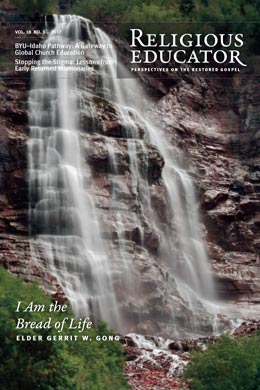Elevate Learning Experiences in Institute: A Global Perspective
Po Nien (Felipe) Chou
Po Nien (Felipe) Chou, "Elevate Learning Experiences in Institue: A Global Perspective," Religious Educator 18, no. 3 (2018): 29–41.
Po Nien (Felipe) Chou (ChouPN@ldschurch.org) was a religious educator and manager of the Office of Research for the Seminaries and Institutes (S&I) of The Church of Jesus Christ of Latter-day Saints when this article was published.
 By writing down what is learned, students are able to better recall the concepts when they need them.
By writing down what is learned, students are able to better recall the concepts when they need them.
Church leaders have noted the challenges facing young adults today and the need to raise the bar and prepare them better to meet these challenges. In May 2014, Elder M. Russell Ballard of the Quorum of the Twelve Apostles explained, “The world today is more challenging than it was [years ago]. . . . What we need now is the greatest generation of young adults in the history of the Church.” Elder Ballard continued, “We need vibrant, thinking, passionate young adults who know how to listen and respond to the whispering of the Holy Spirit. . . . It’s time to raise the bar . . . for your entire generation.”[1] In his August 2015 address to religious educators, Elder Kim B. Clark, Church Commissioner of Education, said, “You and I need to be much better than we are now. . . . We need to educate the rising generation more deeply and more powerfully than we have ever done before.” Elder Clark added that “the young people will come and will want to receive more.”[2]
Among the efforts to help young adults raise the bar, the Seminaries and Institutes (S&I) have focused on ways to elevate learning experiences in institute. This article provides a global perspective on the experiences of students and teachers with the three Elevate Learning Experiences (ELE) options in institute, namely (1) writing a course study journal, (2) responding to course questions, or (3) completing a personal learning project. These learning experiences are designed to help institute students strengthen their faith in Jesus Christ and deepen their conversion while also helping to “establish expectations and provide opportunities that inspire students to have meaningful experiences with the word of God.”[3]
Elevate Learning Experiences
To better understand the experience of institute teachers and students with the ELE, in February and March 2017 the S&I Office of Research gathered survey and interview data related to the three ELE options.[4] While survey data came primarily from institute students in the United States, interview data was gathered from both institute teachers and students in and outside the United States. The online survey was distributed to a stratified random sample of institute students in fifteen states throughout various regions of the United States. A total of 241 individuals responded to this online survey. In addition, a purposeful cluster sample of 38 individuals outside the United States provided additional feedback. These included 22 teachers (8 full-time coordinators and 14 stake-called institute teachers) and 16 institute students outside the United States.
Survey findings suggest that in the United States, 47 percent of institute students completed the ELE and 53 percent did not. For those who did not complete their ELE, 41 percent indicated they were not aware of the ELE, 28 percent did not care about receiving credit for the course, and 19 percent noted other reasons (e.g., too busy, already graduated, or schedule changes) (see figure 1).[5]
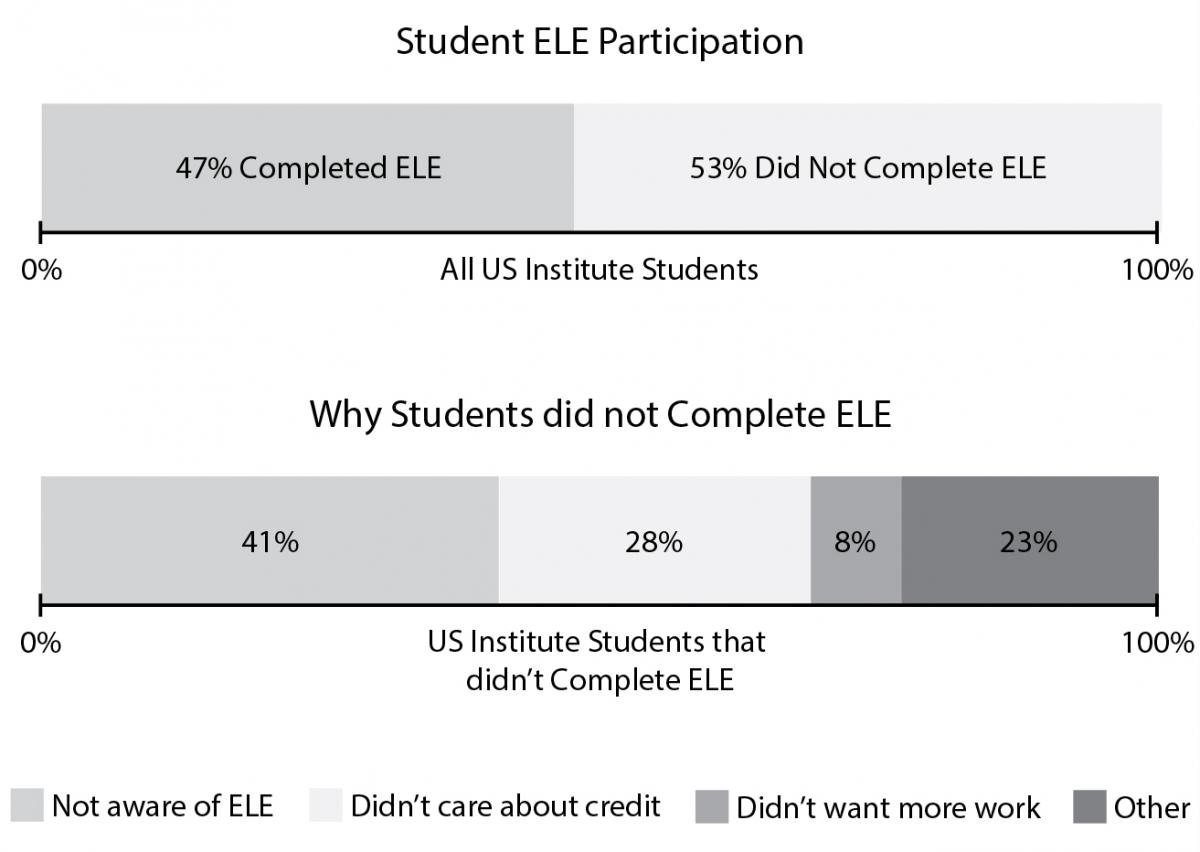 Figure 1. ELE participation.
Figure 1. ELE participation.
Moreover, 63 percent of survey respondents indicated they were allowed to choose their own ELE, while 37 percent said they were told which of the three options to complete. For those who chose their ELE, students’ choices were as follows: 64 percent course study journal, 28 percent elevate learning questions, and 8 percent personal learning projects. For respondents who were assigned their ELE by their teacher, teachers’ choices were as follows: 62 percent elevate learning questions, 30 percent course study journal, and 8 percent personal learning projects. Total distribution for all students were as follows: 52 percent course study journal, 40 percent elevate learning questions, and 8 percent personal learning projects (see figure 2).[6]
 Figure 2. Preferred ELE option.
Figure 2. Preferred ELE option.
Course Study Journal
For the course study journal, institute students are asked to regularly record what they are learning during their personal study or class discussion. They write about their experiences applying what they are learning and how these experiences help to strengthen their testimony and their faith in Jesus Christ.[7] Elder Richard G. Scott of the Quorum of the Twelve Apostles said, “Write down in a secure place the important things you learn from the Spirit. You will find that as you write down precious impressions, often more will come. Also, the knowledge you gain will be available throughout your life.”[8] President Henry B. Eyring, First Counselor in the First Presidency, spoke about the importance of writing down impressions. He said, “I wrote down a few lines every day for years. . . . Before I would write, I would ponder this question: ‘Have I seen the hand of God reaching out to touch us or our children or our family today?’”[9] Most institute classes elect to use the course study journal to elevate the learning experience for their students.
As noted in the survey findings earlier, given a choice, nearly two-thirds of the institute students preferred to write a course study journal for the ELE. These institute students indicated that their primary reasons for choosing the course study journal were as follows: it helped them to remember spiritual insights, they were already keeping a study journal, or they learned better when they wrote things down (see figure 3).[10]
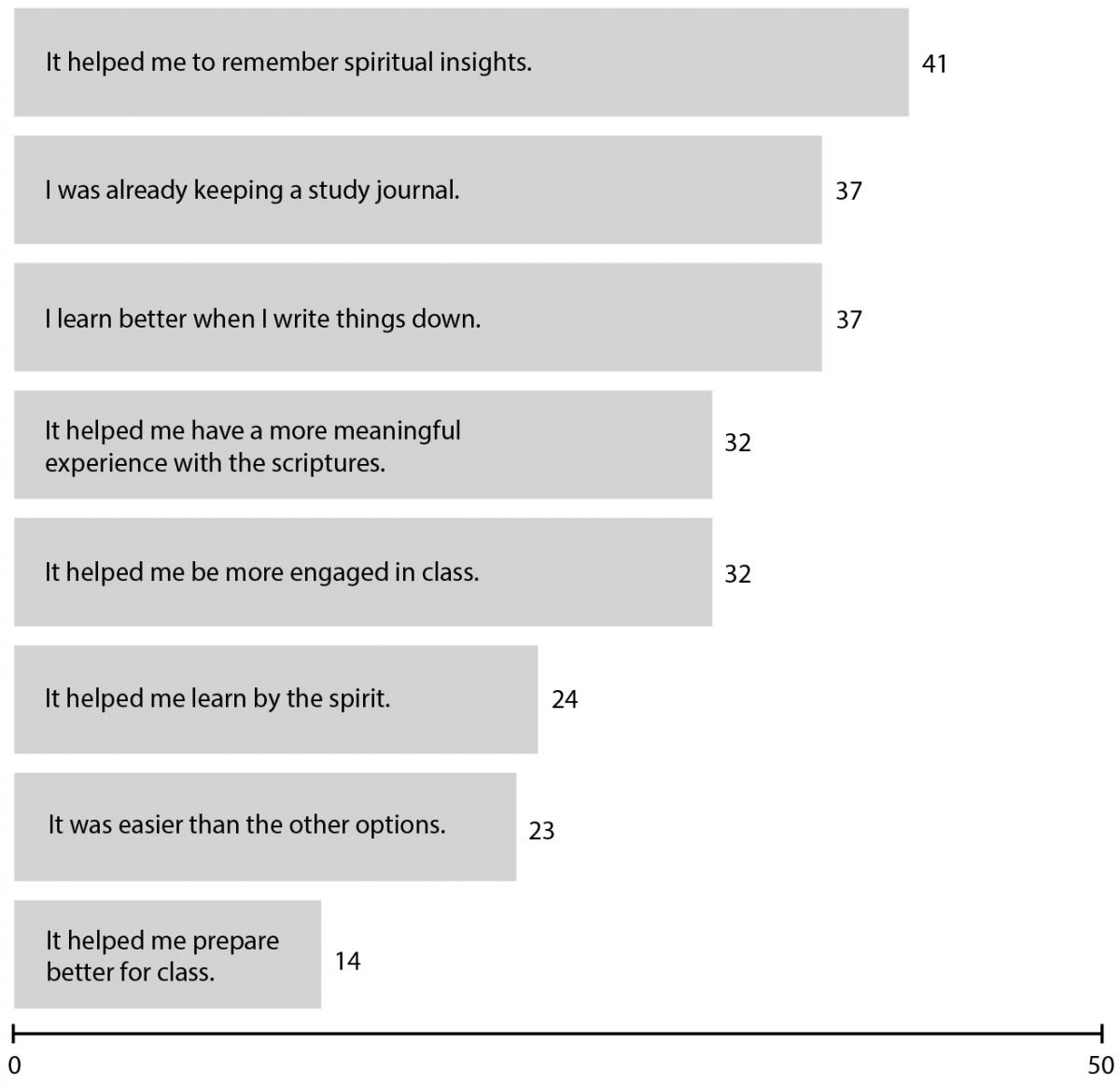 Figure 3. Why students completed course study journals.
Figure 3. Why students completed course study journals.
Brother Jan-Friedrich Hadzik, a coordinator in Germany, said that the institute students in his area like their study journals because they can write and then discuss their insights.[11] This is also illustrated by Jayme Dhennz, an institute student in Bacolod City, Philippines, who explained that using his course study journal is a blessing and expands his learning. He said, “I can’t really pass up writing passages and messages from the scriptures or talks of the prophets . . . because it widens my gospel learning.”[12]
Another coordinator, Brother Tim Kwok, said that most of the institute students in Hong Kong feel that writing a study journal is easy and enjoyable. He added that the students like to “put their thoughts and ideas and insights in their journal.” Kwok often asks his students to write down their thoughts following a class discussion, and many of them “also like the idea that they can keep [it] as a remembrance notebook.”[13]
Sister Mariateresa Santoro, an institute student in Southern Italy who wrote in her study journal, explained, “I felt the desire and the need to write down all my insights and the new concepts I learned during the lesson and in my personal study.” She added, “The reason why I did it is because my journal is something I can take with me, something I can look upon every time to recall a specific spiritual concept or personal revelation.” Taisia Bartolomeo, another institute student in Southern Italy, explained that his journal had three parts: “my notes (from my personal study of the lesson), questions (about the lessons), and the lesson notes (what the teacher said about specific principles). . . . By writing down what I learn[ed], I am able to [better] recall the concepts when I need them.”[14]
Brother Seiichi Takahashi, who teaches institute in Nagoya, Japan, said students like “journaling” because it allows “the learning process to flow smoothly by reading, then participating in class, and then writing down what you have learned in class.”[15] Brother Aleksandr Drachov, a coordinator in Russia, said that asking his institute students to use “the personal journals during the lesson . . . [adds] to their spiritual experience and strengthen[s] their faith.”[16]
Elevate Learning Questions
For the elevate learning questions, institute students have the opportunity to ponder, study, and answer course study questions to elevate their learning experience. Institute students attending one of the four cornerstone courses respond to specific questions related to those courses. Those attending other institute courses answer questions from the general elective questions. Institute teachers provide these questions to students at the beginning of the course. This helps to prepare students, set clear expectations, provide follow-up, and allow for review and revision before they submit their work. Although teachers are encouraged to provide feedback, this is not mandatory and may depend on teachers’ time and class size.[17]
As noted earlier, ELE course questions are the most preferred choice of teachers, but the second most preferred by institute students. The top two reasons why institute students complete the ELE course questions are that it helped them have a more meaningful experience with the scriptures or that it was required by the teacher (see figure 4).[18]
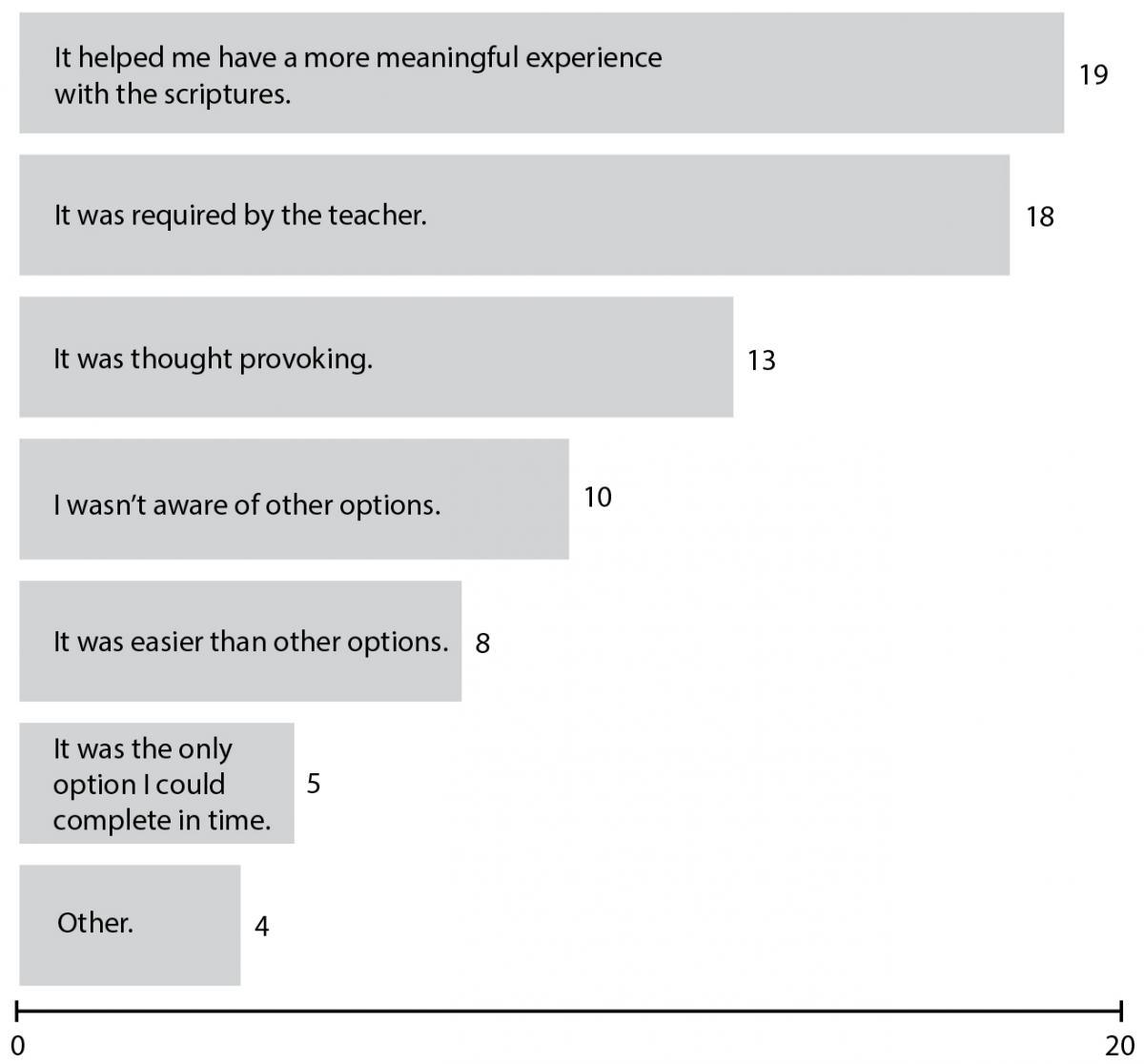 Figure 4. Why students completed the ELE questions.
Figure 4. Why students completed the ELE questions.
Brother Ettore Valentini, who teaches in Southern Italy, invited his institute students to select their option for their learning experiences, and nearly all of them chose to answer essay questions. He said that it was easy and that “their experience in answering questions was very positive. Most of the students really opened their hearts and explained the concepts well in their questions.” Sister Ilaria Bellomo, an institute student in his area, explained, “Even though they seemed simple, the questions made me reflect on myself and on the fact that what I study for institute helps me know Jesus Christ better.”[19] Brother Ricardo Cobing, a coordinator in Bacolod City, Philippines, sees that “students are progressing in their gospel knowledge as they write down their insights to the questions.”[20]
Brother Hyunseung Kim, a coordinator in Korea, explained that “the questions helped the students think deeply about what they studied and drew testimonies in their hearts.” Kim also noted that “the process of finding answers through the scriptures, lessons, and testimonies of classmates was meaningful” for the students in his area. “Two students submitted their essays, and it was a great experience for me to read and learn the testimonies and thoughts of the students,” said Sister Seonsim Kang, a stake institute teacher in Korea. Brother Jinseop Jeong, a Korean institute student, aid, “The questions helped me think deeply about and review what I learned. . . . It was an important time to review, contemplate, and internalize what I learned.”[21]
Personal Learning Project
The personal learning project is also an option available to complete the ELE. For this option, students propose and complete a personal learning project that has been reviewed and approved by their teacher. Through this project, students demonstrate learning and application of what they are learning during the course, which has helped them strengthen their faith in Jesus Christ. This project should be approved by their teacher, be relevant to the course of study, and include personal application and a report of what was done. Although a variety of projects could be created, some examples may include studying a gospel topic from the course, identifying a real-world situation and making a case study of it, or creating a resource based on the course content (e.g., social media, graphic art, music, and so forth). Other ideas may be considered as students seek suggestions from their teacher, Church leaders, classmates, or family members. Students should prayerfully consider a meaningful project that will be of value to them or others.[22]
Although most institute teachers and students prefer the course study journal or the course questions, a personal learning project has also been used by a few students to enhance their gospel learning experience. Even though only 8 percent of students chose a personal learning project for their ELE, those who did believe that it was a good option that helped to accommodate their unique learning style and allowed them to focus on what was most important to them (see figure 5).[23]
 Figure 5. Why students completed the personal learning project.
Figure 5. Why students completed the personal learning project.
One student chose to paint a portrait of the Savior, based on one of the lessons and multiple principles from the institute course on Jesus Christ and the Everlasting Gospel. Another student attending the Eternal Family course chose a project related to family history and temple work, which included 30 hours of family history research. She added that her personal project “culminated in a temple trip with my grandmother and immediate family members in which we completed together over 40 temple sealings that had been prepared throughout the semester. This brought our family closer together and I feel (and my teacher agreed) that it was an appropriate project relative to the course content.”[24]
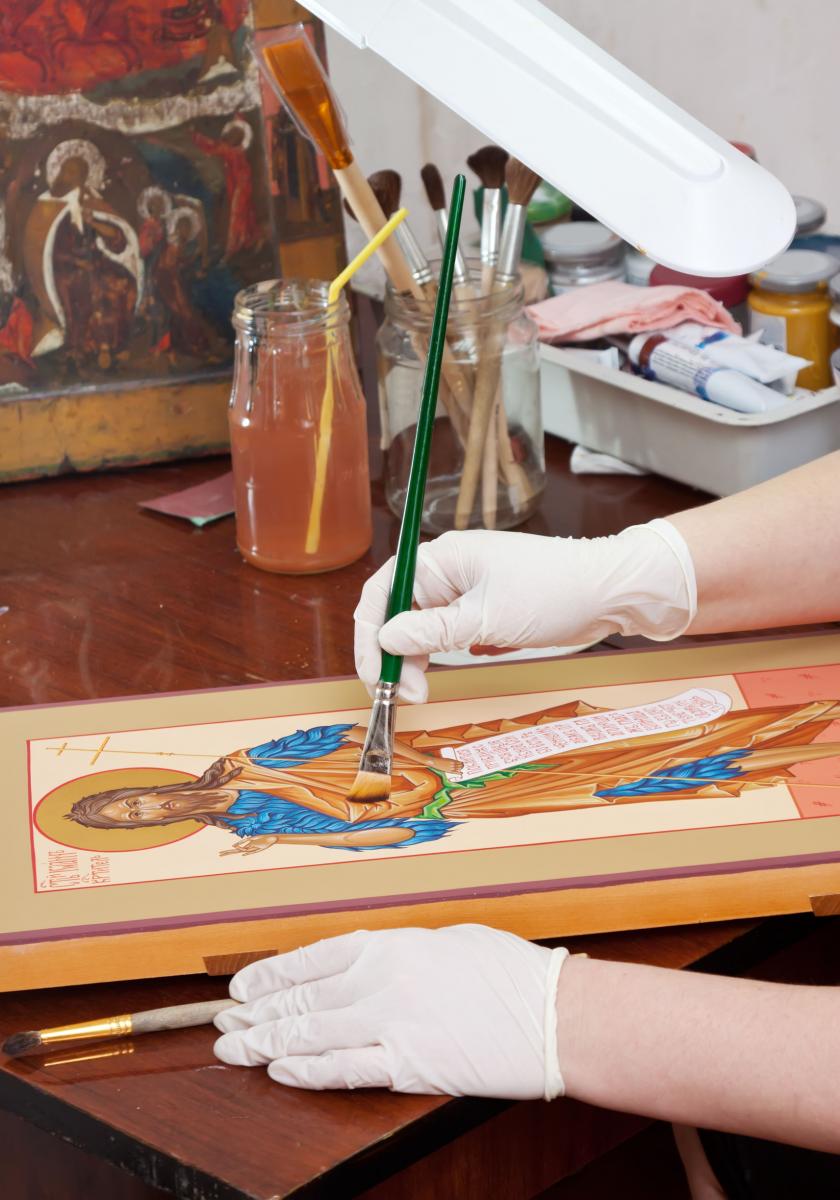 One student chose to paint a portrait of the Savior based on one of the lessons and multiple principles from the institute course on Jesus Christ and the Everlasting Gospel.
One student chose to paint a portrait of the Savior based on one of the lessons and multiple principles from the institute course on Jesus Christ and the Everlasting Gospel.
Brother Seiichi Takahashi, who teaches institute in Nagoya, Japan, feels that students who choose the personal project could very well have a life-changing experience, as they come up with their own theme to work on for several weeks.[25] Brother Joseph Peralta, an institute teacher in Valenzuela City, Philippines, said that the “personal learning project is my favorite . . . to help us personally experience the gospel in our lives” because “it invites the students to act on the things they have learned in class.” Sister Cenia Avila Organis, an institute student in Bicol City, Philippines, prefers the personal learning projects, because it provides her flexibility.[26]
Most Helpful and Meaningful
Institute students who responded to the online survey indicated that the greatest impact of these learning experiences was on “strengthening their faith in Jesus Christ.” Survey respondents also indicated that they most frequently worked on the course study journal, about a few times a week, compared to only once a month on the ELE course questions (see figure 6). These respondents also noted that institute teachers can most help students complete these learning experiences by “encouraging them to work on the ELE throughout the semester.”[27]
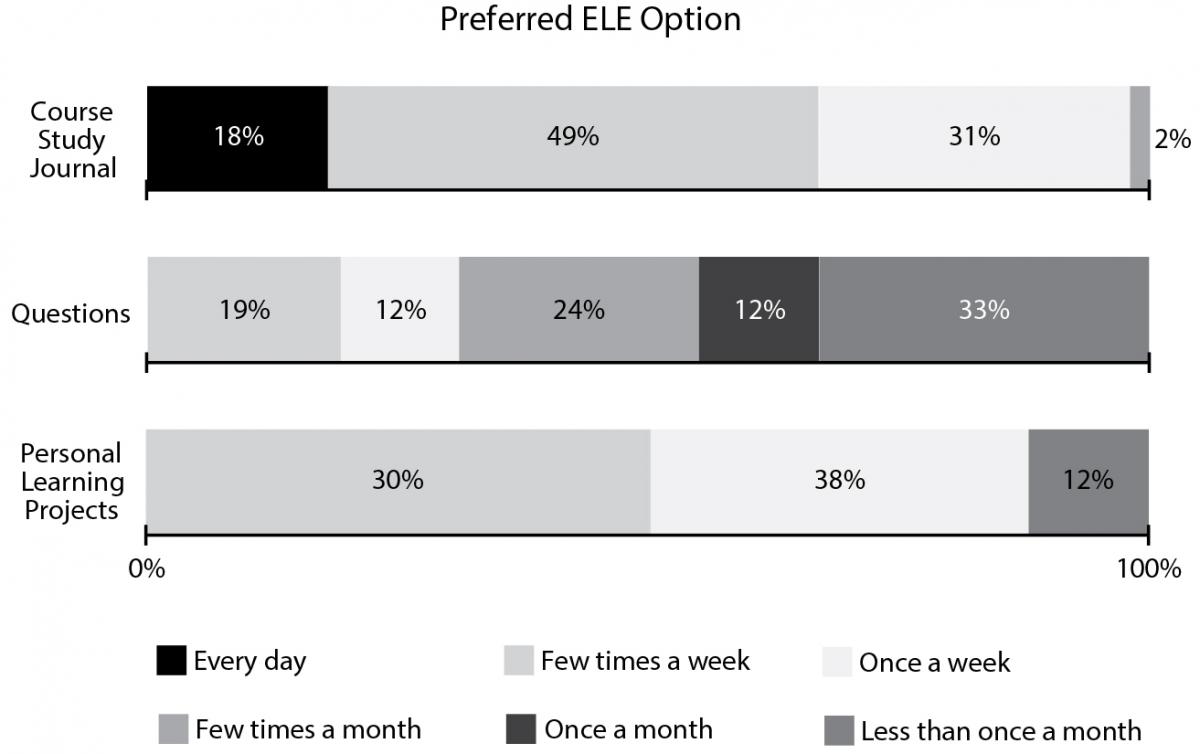 Figure 7. Impact of past ELE on future ELE participation.
Figure 7. Impact of past ELE on future ELE participation.
Figure 6. Frequency of work for various ELE options.
Institute students in the survey also explained what would make these learning experiences more meaningful to them. They noted that teachers could encourage greater collaboration and engagement throughout the semester by making the course more relevant, allowing sharing between students, facilitating daily reading and regular journaling, providing actionable invitations, and frequently asking about their progress throughout the course. Moreover, more meaningful experiences came as their institute teachers communicated the purpose of ELE and explained the options and expectations more clearly. Responding to the question whether they plan to complete an ELE in a future institute class, students who completed learning experiences in previous courses were significantly more likely to complete one in their next institute course (see figure 7).[28]
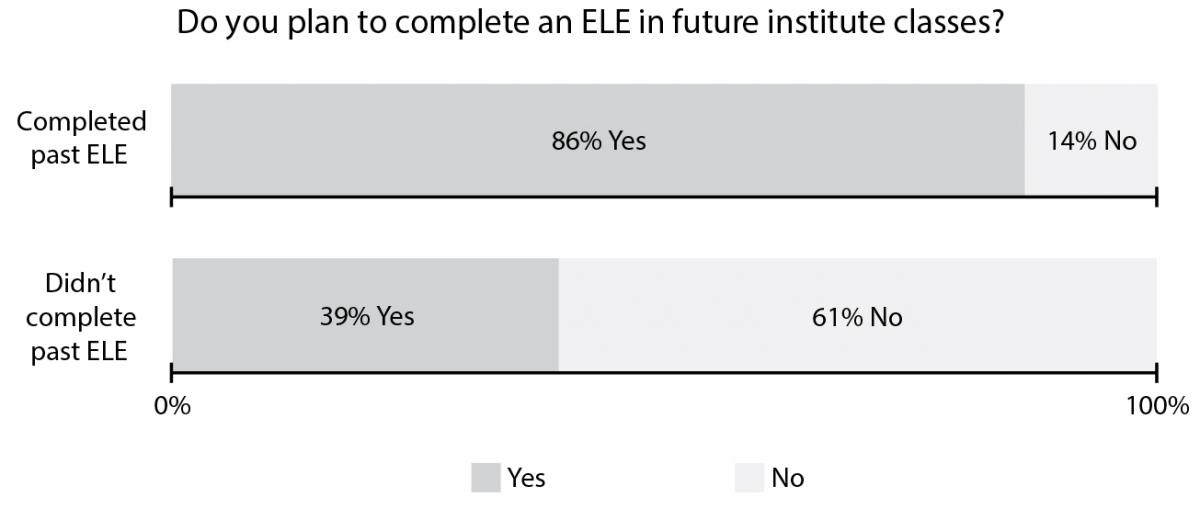
Summary
Whether institute students chose to write a course study journal, respond to course questions, or create a personal learning project, their additional effort helps them to elevate their learning experience and deepen their conversion. According to Brother Rogelio Montemayor, a coordinator in Dumaguete City, Philippines, as a result of the learning experiences in institute, he has seen more in-depth discussions in institute classes because the students are reading and sharing their learning experiences.[29]
President Thomas S. Monson said, “As with anything in life, much of what you take from your seminary [or institute] experience depends on your attitude and your willingness to be taught. May your attitude be one of humility and a desire to learn.”[30] As institute students “more fully understand, apply, and share the teachings of Jesus Christ,” they will draw closer to the Savior. The purpose of the ELE is to facilitate providing students “with the opportunity to have meaningful experiences with the word of God.”[31]
Notes
[1] M. Russell Ballard, “The Greatest Generation of Young Adults,” Ensign, May 2014, 67–68.
[2] Kim B. Clark, “Encircled About with Fire” (satellite broadcast, Seminaries and Institutes of Religion, 4 August 2015), https://
[3] Seminaries and Institutes of Religion, “Elevate Learning,” 2016 Area Director Training: Priorities Training, April 2016.
[4] S&I Office of Research, “Institute ELE Student Survey,” report, Salt Lake City, April 2017.
[5] S&I Office of Research, “Institute ELE Student Survey,” report, Salt Lake City, April 2017.
[6] S&I Office of Research, “Institute ELE Student Survey,” report, Salt Lake City, April 2017.
[7] Institute Elevate Learning Experience (Salt Lake City: The Church of Jesus Christ of Latter-day Saints, 2017), 18.
[8] Richard G. Scott, “To Acquire Knowledge and the Strength to Use It Wisely,” Ensign, June 2002, 32.
[9] Henry B. Eyring, “O Remember, Remember,” Ensign, November 2007, 66–67.
[10] S&I Office of Research, “Institute ELE Student Survey,” report, Salt Lake City, April 2017.
[11] S&I Volunteer Committee, Institute ELE Feedback from Germany, February 2017.
[12] S&I Volunteer Committee, Institute ELE Feedback from Philippines, February 2017.
[13] S&I Volunteer Committee, Institute ELE Feedback from Hong Kong, February 2017.
[14] S&I Volunteer Committee, Institute ELE Feedback from Italy, February 2017.
[15] S&I Volunteer Committee, Institute ELE Feedback from Japan, February 2017.
[16] S&I Volunteer Committee, Institute ELE Feedback from Russia, February 2017.
[17] Institute Elevate Learning Experience (Salt Lake City: The Church of Jesus Christ of Latter-day Saints, 2017), 1–2.
[18] S&I Office of Research, “Institute ELE Student Survey,” report, Salt Lake City, April 2017.
[19] S&I Volunteer Committee, Institute ELE Feedback from Italy, February 2017.
[20] S&I Volunteer Committee, Institute ELE Feedback from Philippines, February 2017.
[21] S&I Volunteer Committee, Institute ELE Feedback from Korea, February 2017.
[22] Institute Elevate Learning Experience (Salt Lake City: The Church of Jesus Christ of Latter-day Saints, 2017), 19.
[23] S&I Office of Research, “Institute ELE Student Survey,” report, Salt Lake City, April 2017.
[24] S&I Office of Research, “Institute ELE Student Survey,” report, Salt Lake City, April 2017.
[25] S&I Volunteer Committee, Institute ELE Feedback from Japan, February 2017.
[26] S&I Volunteer Committee, Institute ELE Feedback from Philippines, February 2017.
[27] S&I Office of Research, “Institute ELE Student Survey,” report, Salt Lake City, April 2017.
[28] S&I Office of Research, “Institute ELE Student Survey,” report, Salt Lake City, April 2017.
[29] S&I Volunteer Committee, Institute ELE Feedback from Philippines, February 2017.
[30] Thomas S. Monson, “Believe, Obey, and Endure,” Ensign, May 2012, 128.
[31] Institute Elevate Learning Experience (Salt Lake City: The Church of Jesus Christ of Latter-day Saints, 2017), v.
